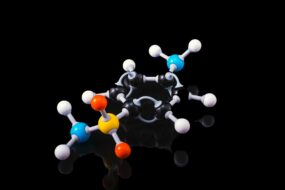- Home
- DRUGS
- Drugs acting on infectious Agents
- Clarithromycin
Clarithromycin has an antimicrobial spectrum similar to that of erythromycin.Clarithromycin is more acid-stable than erythromycin and is rapidly absorbed in the body. Its oral bioavailability is ~50% due to first-pass metabolism.
Indication.
- Upper and lower respiratory tract infections, sinusitis, otitis media, whooping cough, atypical pneumonia, skin and skin structure infections due to Strep. pyogenes and Staph. Aureus.
- They are used as a component of a triple-drug regimen to eradicate H. pylori in 2 weeks.
- As a first-line drug in combination regimens for MAC infection in AIDS patients and a second-line drug for other atypical mycobacterial diseases and leprosy.
Adverse effects
- GI disturbance.
- Diarrhoea is occasional.
- Reversible hearing impairment.
- Pseudomembranous enterocolitis, hepatic dysfunction or rhabdomyolysis.
- Hypersensitivity; rashes and fever.
- Hepatitis with cholestatic jaundice resembling viral hepatitis and extrahepatic biliary obstruction occurs.
- Taste disturbances.
Drug interactions.
- Sensitivity to other macrolide antibiotics.
Contraindications.
- Impaired liver functions.
- Jaundice and syphilis in pregnancy.
Dosage.
- 250 mg BD for 7 days; severe cases 500 mg BD up to 14 days.
- CLARIBID 250, 500 mg tablets, 250 mg/5 ml dry syrup;
- CLARIMAC 250, 500 mg tablets; SYNCLAR 250 mg tablets, 125 mg/5 ml dry syrup.












